The BMW i3 and i8 are unveiled
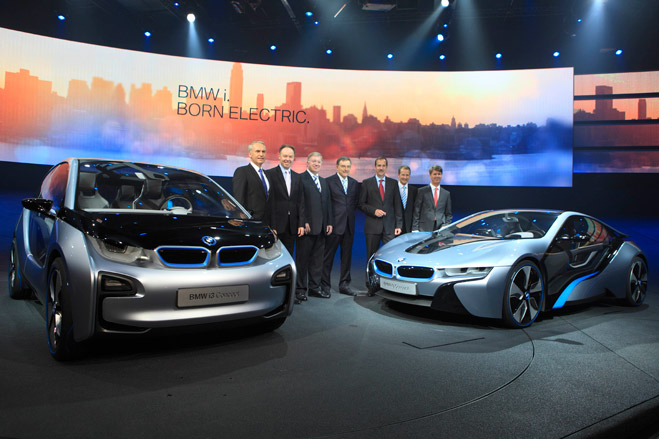
The i3 and i8 receive a glitzy media unveiling in Frankfurt before hundreds of journalists flown in from all over the globe. The event was broadcast simultaneously to the rest of the world with the entire BMW Board present for the first time in the company’s history, making it abundantly clear just how important BMW views this new sustainable venture
BMW informed the world of its intention to build ecological cars under the 'BMW i' sub-brand a year ago and ever since then the German marque has kept us excited with information bites, teaser videos and vague sketches. Last week, the firm finally unveiled the first two cars. Ultimately, these new BMW i models will roll out of the production lines of the company's Zaha Hadid-designed Leipzig factory in 2013.
Revealed in Frankfurt last week, the event gathered the entire BMW Board – present for the first time in the company's history – making it abundantly clear just how important BMW views this new sustainable venture.
The i3 and i8 bookend the new BMW i brand. Whereas the i3 is an electrically-driven compact car designed for dense urban environments - it was previously coined the Megacity Vehicle - the i8 is a part-electric super sports car proposition developed from the 2009 Vision EfficientDynamics concept car.
At the core of all BMW i cars is BMW's 'LifeDrive' architecture. This clever modular structure allows all the elements connected with running the car - the suspension, lithium-ion batteries and drive systems - to sit low in the aluminium Drive part whilst the carbon fibre passenger Life Cell is mounted on top. It's this reliance on carbon fibre that makes the BMW i cars viable; massively strong and light, carbon fibre construction allows electric propulsion to deliver performance and range.
We caught up with Adrian van Hooydonk, senior vice president of BMW Group design, at the event to find out more about the design of the first BMW i cars.
How do you visually express e-mobility?
Receive our daily digest of inspiration, escapism and design stories from around the world direct to your inbox.
This took some time for us to realise. How do you express zero-emission, how do you express clean? People talk about clean surfaces, and this is what we have here. We have a design that isn't overly complicated, there aren't that many lines and this means the surfaces are clean. The few lines we have tie this design to that of BMW and are also an expression of engineering precision.
These two cars have a very distinct almost futuristic design language. Was this intentional?
BMW customers always want to show how dynamic and how fast they move in life. Customers who are interested in these vehicles are more interested in the good things in life. Subsequently yes we wanted these cars to look intelligent, clever, clean and light - and not necessarily aggressive in anyway. This is why we have changed the look. Electric cars are not slow either and they can be fun to drive, so we had to express all these aspects.
You can still tell from the design of the grill and lights that they are from the BMW family.
The proportions of the two cars are very different but they share some characteristics especially in the face and the treatment of the BMW classic kidney grill. These cars don't need much air intake [to cool the engine], especially the i3 that is all electric. So we applied a blue cover to the grill but it keeps the shape, which gives an immediate connection with mother brand BMW.
The i3 is only 3845mm long, 1537mm tall and 2011mm wide yet feels spacious inside. How has the modular architecture impacted on the design?
This radical departure from the normal car construction delivered us so many advantages which works for a small city car like the i3. The modular architecture means the engine fits underneath creating a relatively large passenger cell. The floor is flat, which is not often the case in cars, and this enhances your feeling of spaciousness inside. Also the carbon fibre structure is so stiff that we could do away with the B-pillar and that allows us to do coach doors, so you have a very good egress and entry into the car.
As a designer are you orchestrating materials like glass to create more of an open environment, especially in the i3 which is a relatively compact car?
We have a lot of glass, which allows for all-round visibility in the car. This helps with the theme of lightness and space throughout the interior of the two cars.
How different was to design the i8, which is essentially a fast sports car yet still has an ecological message to convey?
The sports car, just by virtues of its different proportions, looks more dynamic. When you look at the i8 the exterior proportions are the first things that strike the eye - you see more speed.
We have taken care so it doesn't look as aggressive as normal super sports car - there are no wings and things that move up and down and air intakes like conventional sports cars. Instead there are modern and very unique elements like on the C-pillar where the air flows through to improve the aerodynamic.
Aerodynamics seems to have governed much of the design, especially with the i8.
Aerodynamics was so important to the design and although I cannot give exact figures, having put them through wind tunnels they both have a very, very low cd [drag coefficient] value.
Another interesting design is the design of the tyres. For us designers it was a dream using 19" wheels but here we made them very narrow which helps with aerodynamics.
What message are you giving with these cars?
Our goal is to design something completely new and create a new style. For these cars we had to find a new language of shape that expressed this new premium, intelligent, clean and safe drive. It has to look fun to drive, as it is a BMW, and also show that electric cars aren't slow. And it also has to look futuristic, as the technology is futuristic.
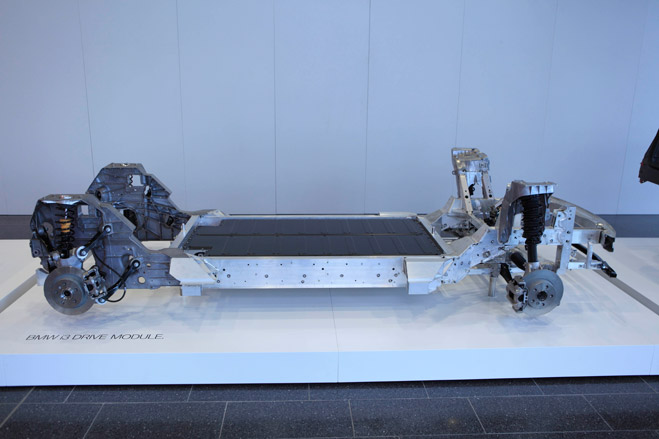
At the core of all BMW i cars is BMW’s ’LifeDrive’ architecture. This clever modular structure allows all the elements connected with running the car - the suspension, lithium-ion batteries and drive systems - to sit low in the aluminium Drive part...
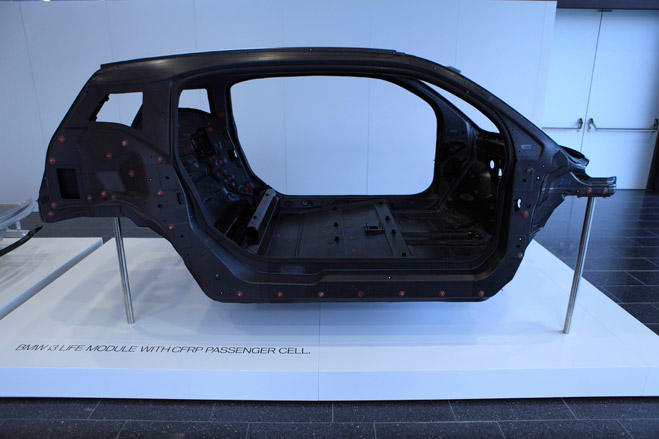
...whilst the carbon fibre passenger Life Cell (pictured) is mounted on top. It’s this reliance on carbon fibre that makes the BMW i cars viable; massively strong and light, carbon fibre construction allows electric propulsion to deliver performance and range.
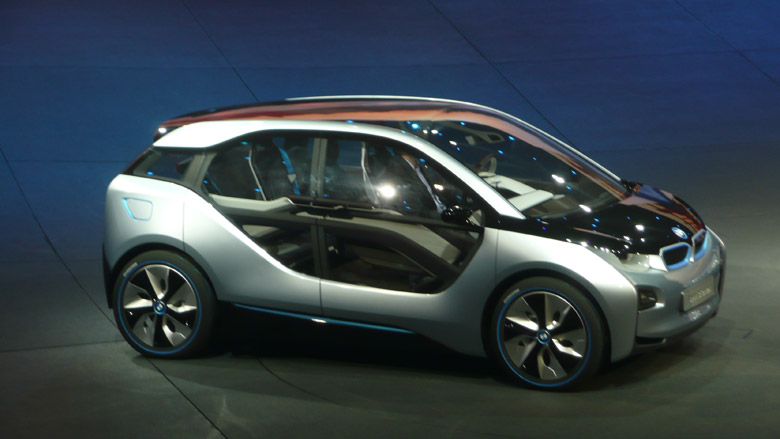
The i3 is an electrically-driven compact car designed for dense urban environments
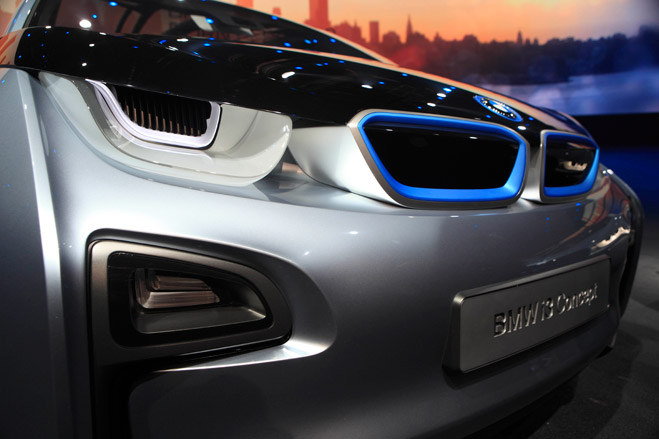
’We wanted these cars to look intelligent, clever, clean and light - and not necessarily aggressive in anyway,’ says Adrian van Hooydonk, senior vice president of BMW Group design
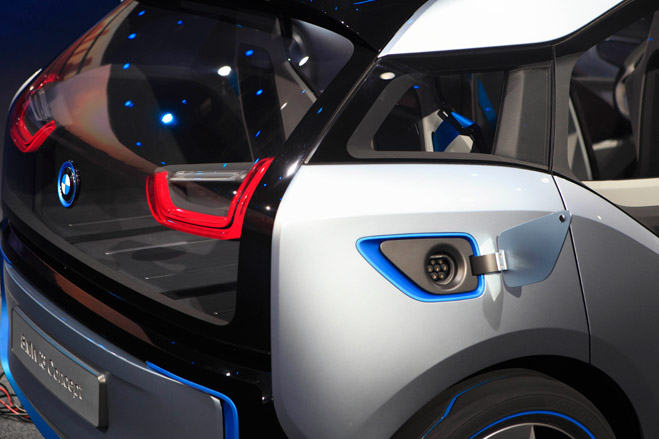
The i3 is only 3845mm long, 1537mm tall and 2011mm wide yet feels spacious inside
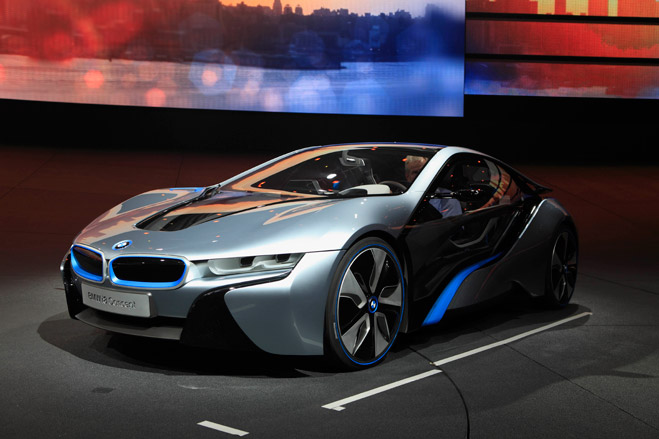
The i8 is a part-electric super sports car proposition developed from the 2009 Vision EfficientDynamics concept car
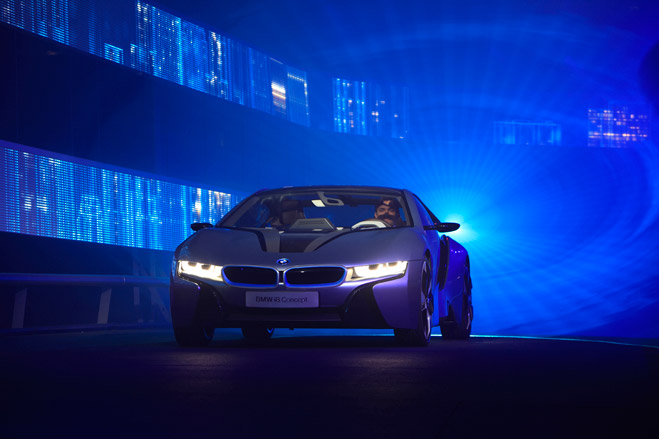
When you look at the i8 the exterior proportions are the first things that strike the eye - you see more speed
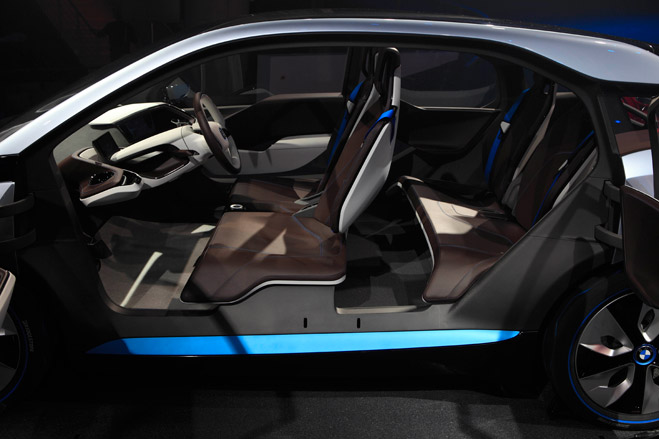
The interior of the i8 - ’We have taken care to make it look as aggressive as normal super sports cars,’ says van Hooydonk
A writer and editor based in London, Nargess contributes to various international publications on all aspects of culture. She is editorial director on Voices, a US publication on wine, and has authored a few lifestyle books, including The Life Negroni.
-
 Men’s Fashion Week A/W 2026 is almost here. Here’s what to expect
Men’s Fashion Week A/W 2026 is almost here. Here’s what to expectFrom this season’s roster of Pitti Uomo guest designers to Jonathan Anderson’s sophomore men’s collection at Dior – as well as Véronique Nichanian’s Hermès swansong – everything to look out for at Men’s Fashion Week A/W 2026
-
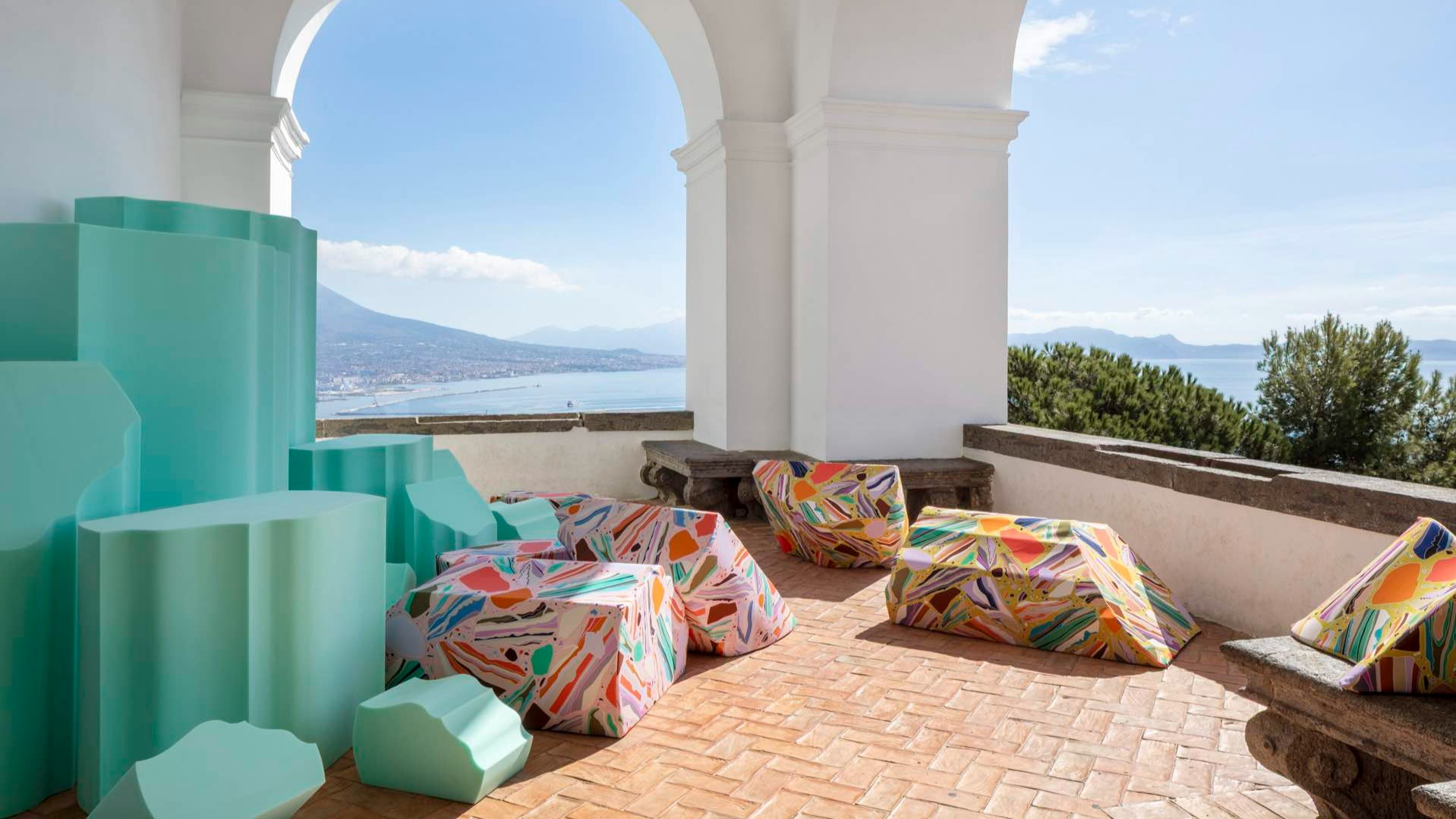 The international design fairs shaping 2026
The international design fairs shaping 2026Passports at the ready as Wallpaper* maps out the year’s best design fairs, from established fixtures to new arrivals.
-
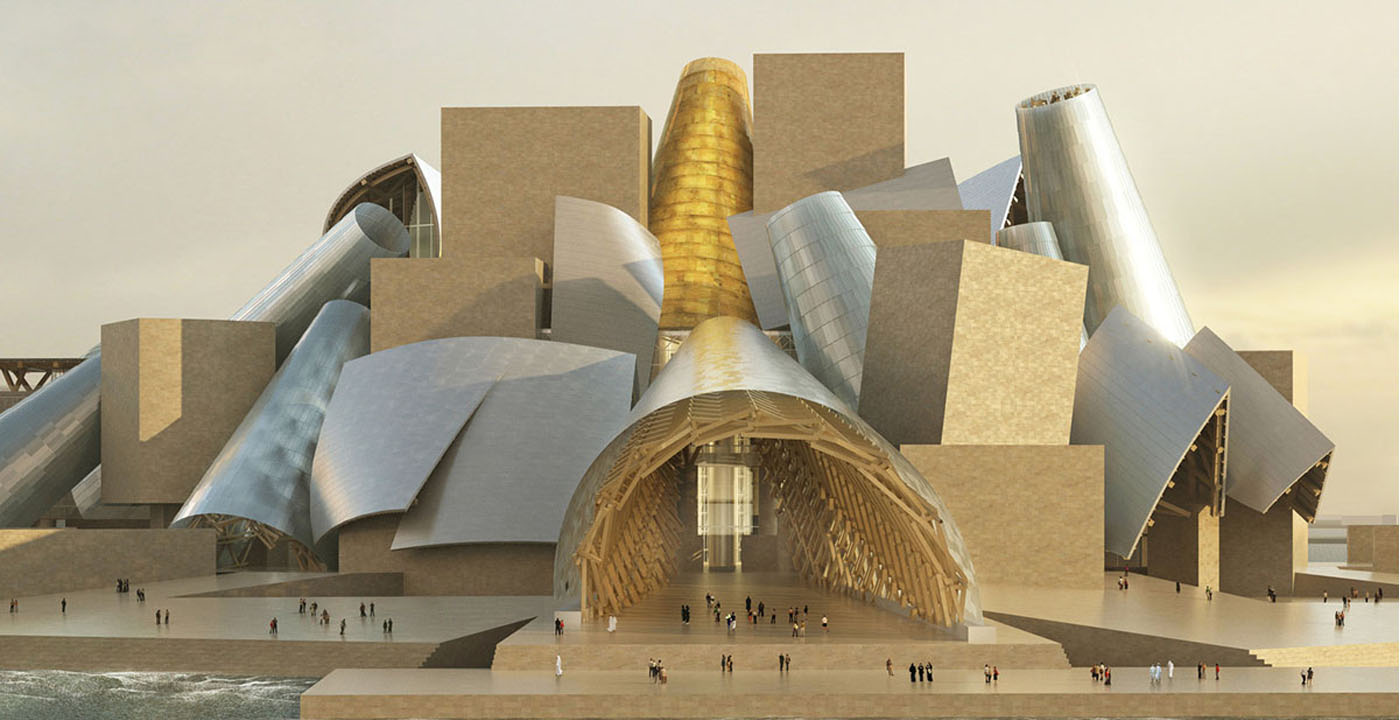 The eight hotly awaited art-venue openings we are most looking forward to in 2026
The eight hotly awaited art-venue openings we are most looking forward to in 2026With major new institutions gearing up to open their doors, it is set to be a big year in the art world. Here is what to look out for
-
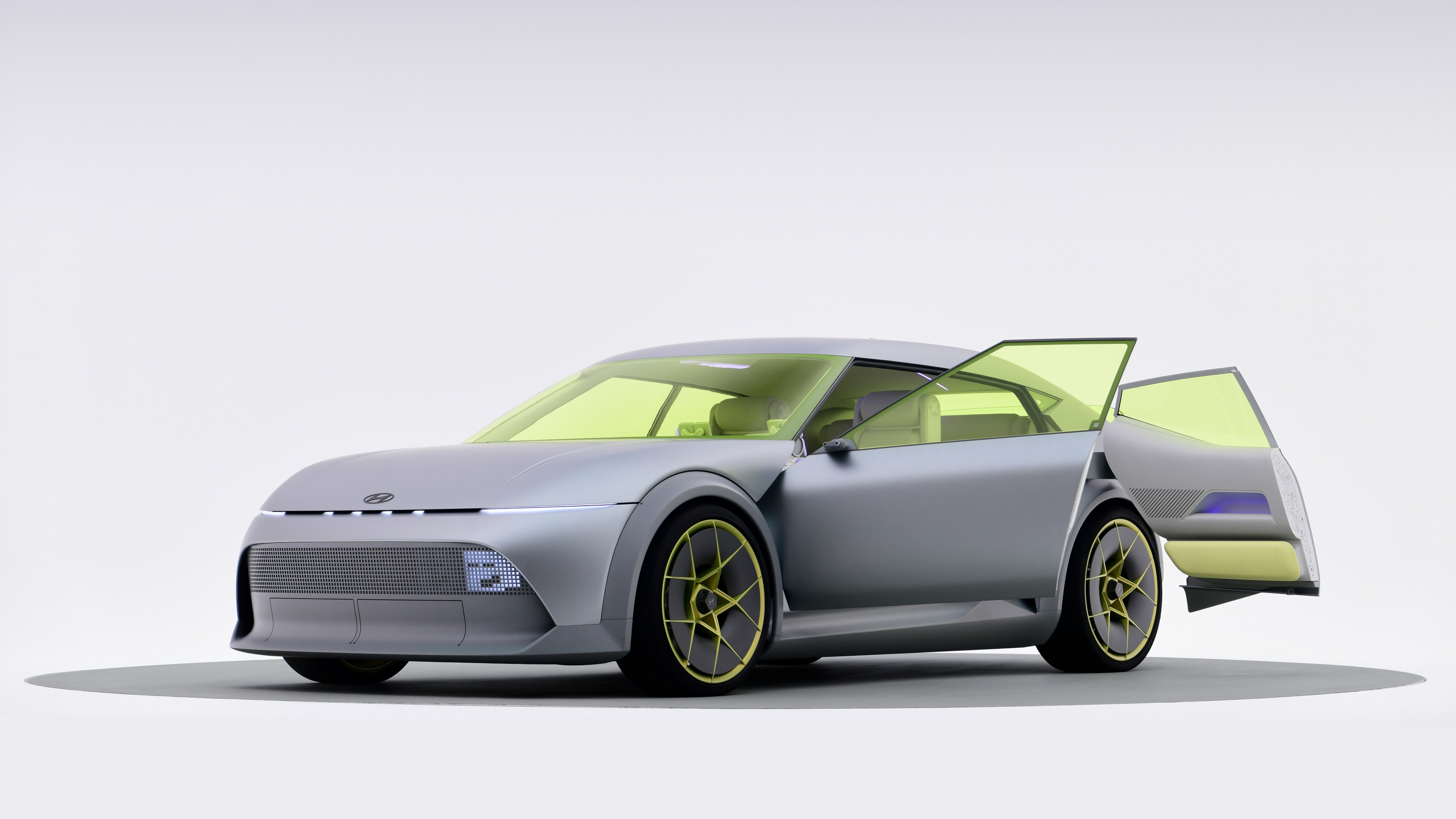 All the new electric cars and concepts revealed at Munich’s IAA Mobility 2025
All the new electric cars and concepts revealed at Munich’s IAA Mobility 2025Munich’s alternative motorshow is now in its third iteration, combining a traditional exhibition space with a conference and large-scale public activations on the streets of the city
-
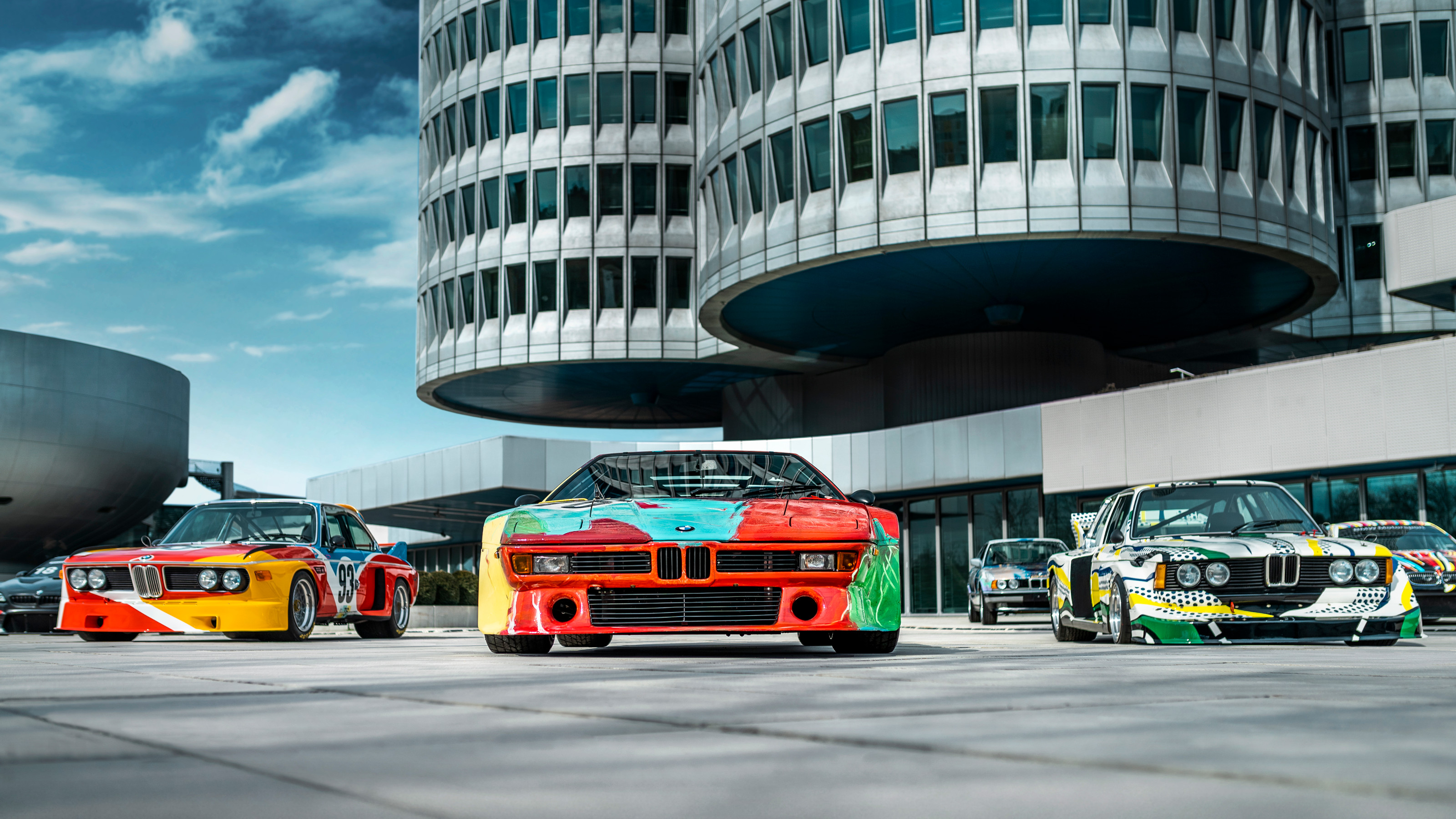 BMW celebrates half a century of its pioneering Art Car project with exhibitions and more
BMW celebrates half a century of its pioneering Art Car project with exhibitions and moreWe present a portfolio of the artists who have contributed to 50 years of BMW Art Cars, including Andy Warhol, John Baldessari, Jenny Holzer and David Hockney
-
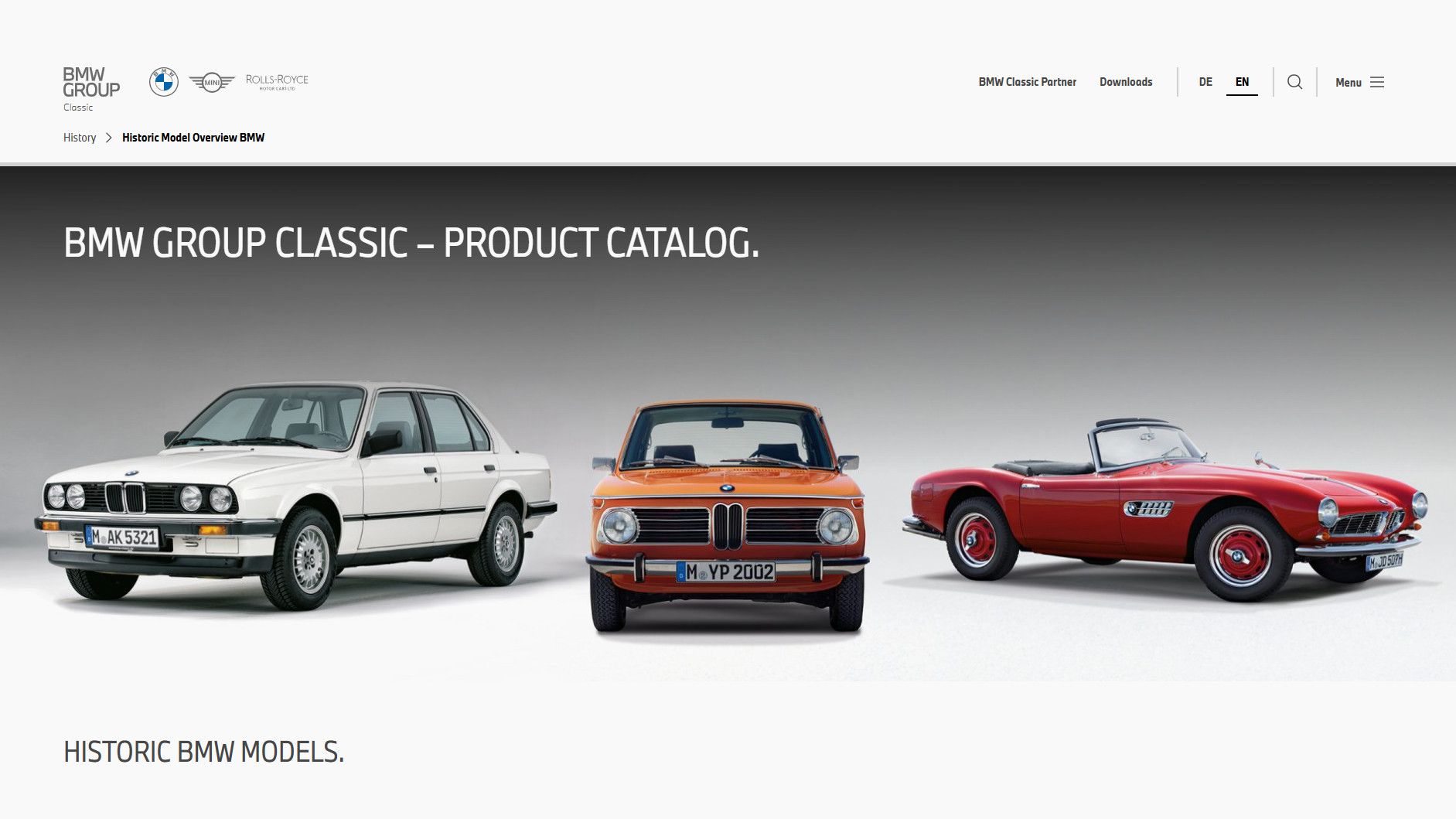 Peruse the new BMW Group Archive to explore the evolution of BMW design over the decades
Peruse the new BMW Group Archive to explore the evolution of BMW design over the decadesFor lovers of the marque, BMW’s commitment to online archiving is second to none. The latest website from the Bavarian manufacturer is this extensive visual catalogue of 80 years’ worth of BMW design
-
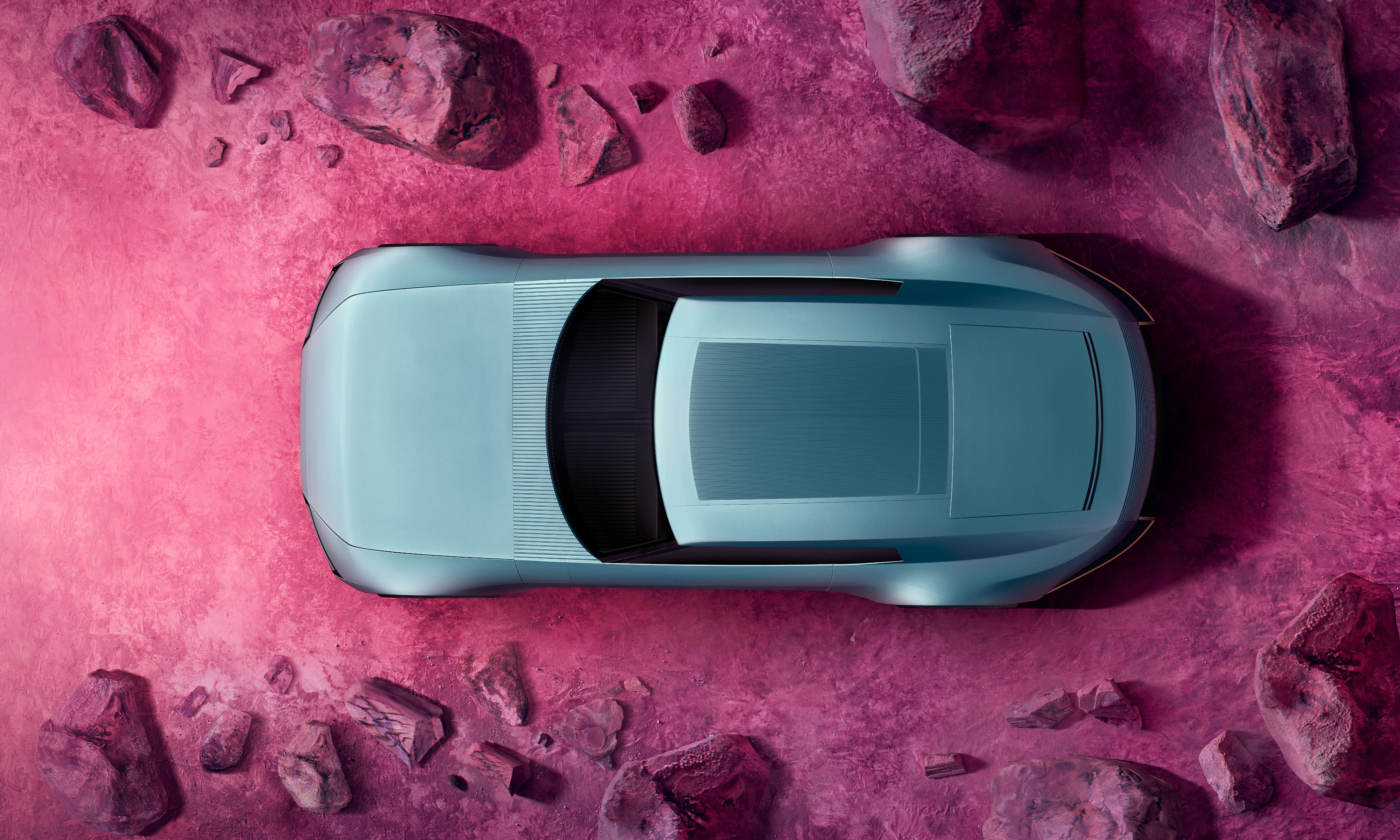 The top 10 concept cars of 2024, as selected by Wallpaper’s Transport Editor
The top 10 concept cars of 2024, as selected by Wallpaper’s Transport EditorWe round up our favourite forays into futuristic design with this collection of concepts and design studies showcasing the transport of tomorrow
-
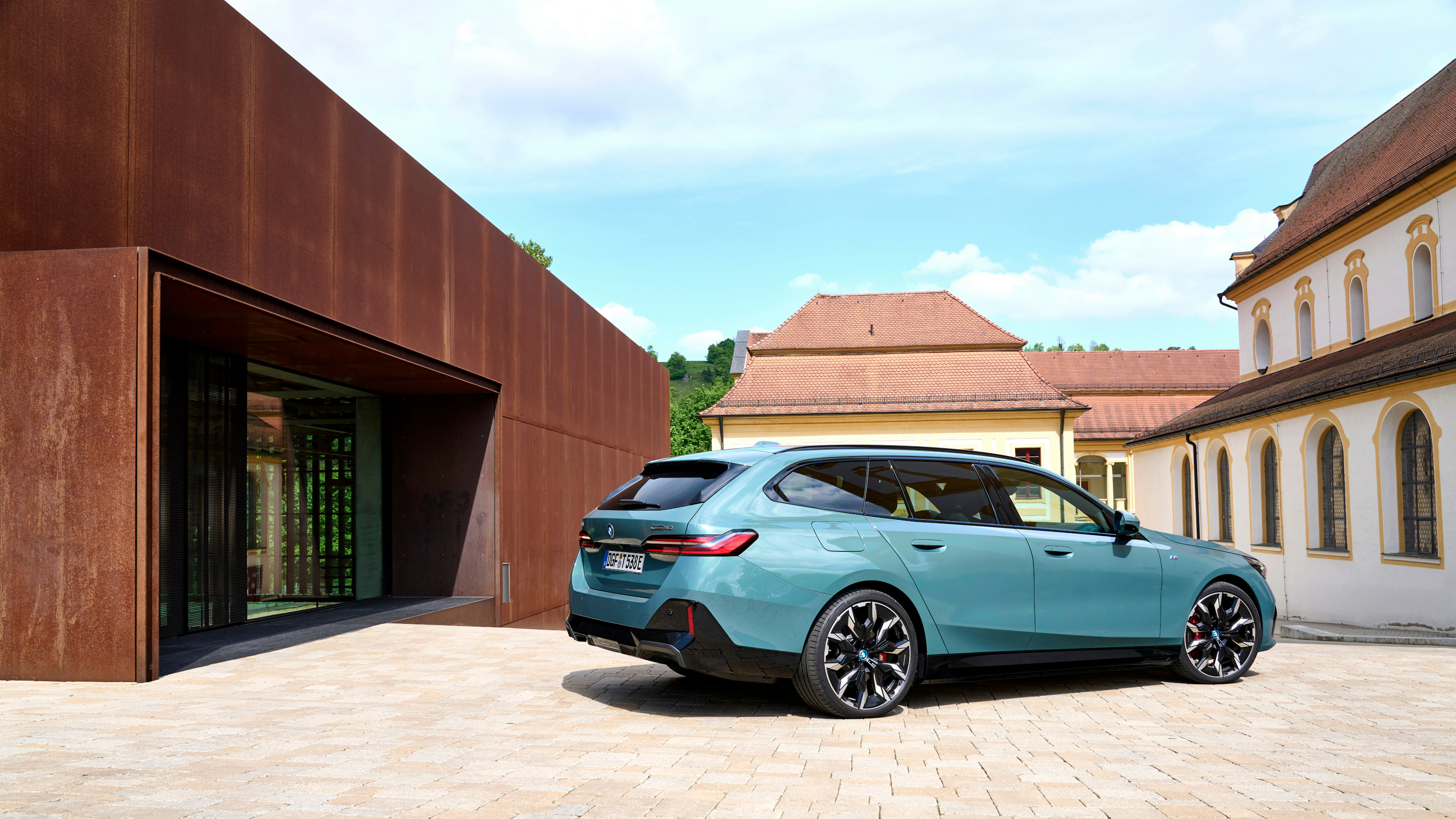 New BMW i5 Touring is an all-electric tech powerhouse that brings the noise
New BMW i5 Touring is an all-electric tech powerhouse that brings the noiseBMW has thrown its considerable expertise into making the i5 eDrive40 M Sport Pro Touring the ultimate zero-emission all-rounder. Jonathan Bell tries it out
-
 BMW’s limited-edition Skytop roadster draws on the past. Could it also predict the future?
BMW’s limited-edition Skytop roadster draws on the past. Could it also predict the future?Just 50 examples of the BMW Skytop are being built, and they’ve all been spoken for. We examine whether this classically styled machine is a harbinger of aesthetic change
-
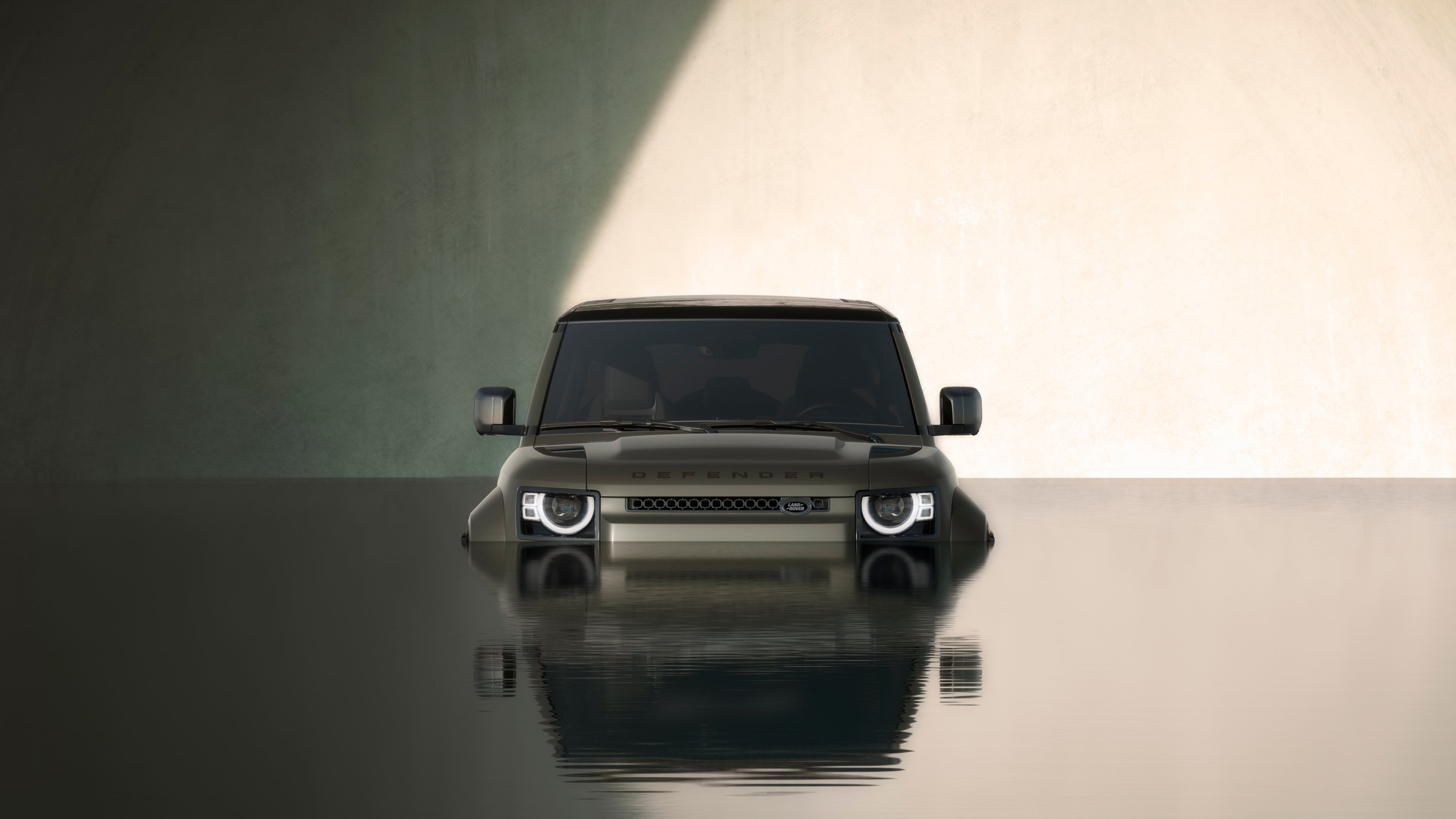 The 2024 Goodwood Festival of Speed hosted a wealth of auto innovation, from hypercars to hot hatches
The 2024 Goodwood Festival of Speed hosted a wealth of auto innovation, from hypercars to hot hatchesThe best new SUVs, EVs, hatchbacks and supercars to emerge from the 2024 Goodwood Festival of Speed
-
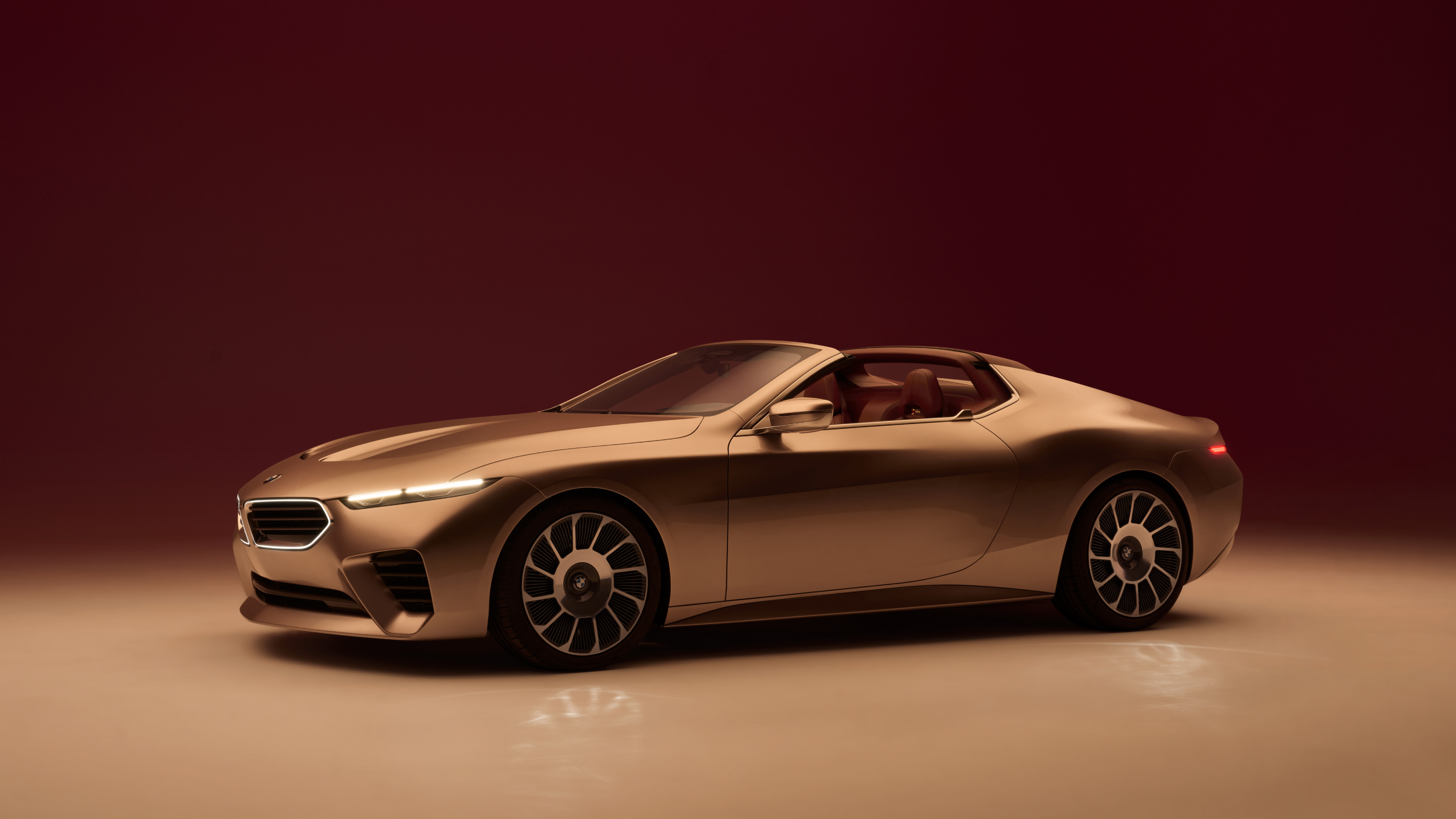 The Concept Mercedes-AMG PureSpeed and BMW Concept Skytop offer drop-top dreams
The Concept Mercedes-AMG PureSpeed and BMW Concept Skytop offer drop-top dreamsBMW and Mercedes-AMG open up with two new convertible concepts, one pitched at performance, the other at the spirit of the good life